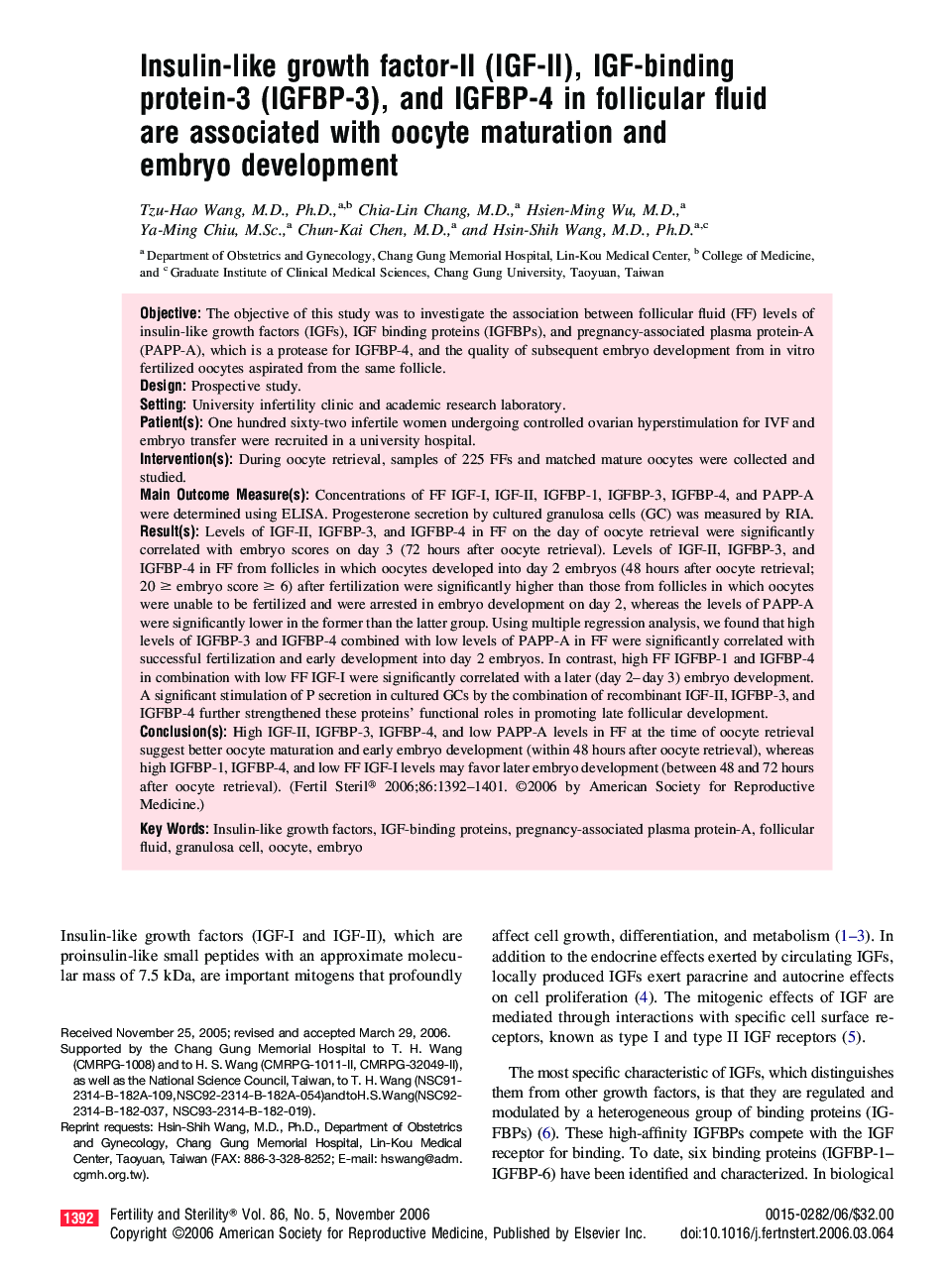| Article ID | Journal | Published Year | Pages | File Type |
|---|---|---|---|---|
| 3940354 | Fertility and Sterility | 2006 | 10 Pages |
ObjectiveThe objective of this study was to investigate the association between follicular fluid (FF) levels of insulin-like growth factors (IGFs), IGF binding proteins (IGFBPs), and pregnancy-associated plasma protein-A (PAPP-A), which is a protease for IGFBP-4, and the quality of subsequent embryo development from in vitro fertilized oocytes aspirated from the same follicle.DesignProspective study.SettingUniversity infertility clinic and academic research laboratory.Patient(s)One hundred sixty-two infertile women undergoing controlled ovarian hyperstimulation for IVF and embryo transfer were recruited in a university hospital.Intervention(s)During oocyte retrieval, samples of 225 FFs and matched mature oocytes were collected and studied.Main Outcome Measure(s)Concentrations of FF IGF-I, IGF-II, IGFBP-1, IGFBP-3, IGFBP-4, and PAPP-A were determined using ELISA. Progesterone secretion by cultured granulosa cells (GC) was measured by RIA.Result(s)Levels of IGF-II, IGFBP-3, and IGFBP-4 in FF on the day of oocyte retrieval were significantly correlated with embryo scores on day 3 (72 hours after oocyte retrieval). Levels of IGF-II, IGFBP-3, and IGFBP-4 in FF from follicles in which oocytes developed into day 2 embryos (48 hours after oocyte retrieval; 20 ≥ embryo score ≥ 6) after fertilization were significantly higher than those from follicles in which oocytes were unable to be fertilized and were arrested in embryo development on day 2, whereas the levels of PAPP-A were significantly lower in the former than the latter group. Using multiple regression analysis, we found that high levels of IGFBP-3 and IGFBP-4 combined with low levels of PAPP-A in FF were significantly correlated with successful fertilization and early development into day 2 embryos. In contrast, high FF IGFBP-1 and IGFBP-4 in combination with low FF IGF-I were significantly correlated with a later (day 2–day 3) embryo development. A significant stimulation of P secretion in cultured GCs by the combination of recombinant IGF-II, IGFBP-3, and IGFBP-4 further strengthened these proteins’ functional roles in promoting late follicular development.Conclusion(s)High IGF-II, IGFBP-3, IGFBP-4, and low PAPP-A levels in FF at the time of oocyte retrieval suggest better oocyte maturation and early embryo development (within 48 hours after oocyte retrieval), whereas high IGFBP-1, IGFBP-4, and low FF IGF-I levels may favor later embryo development (between 48 and 72 hours after oocyte retrieval).
